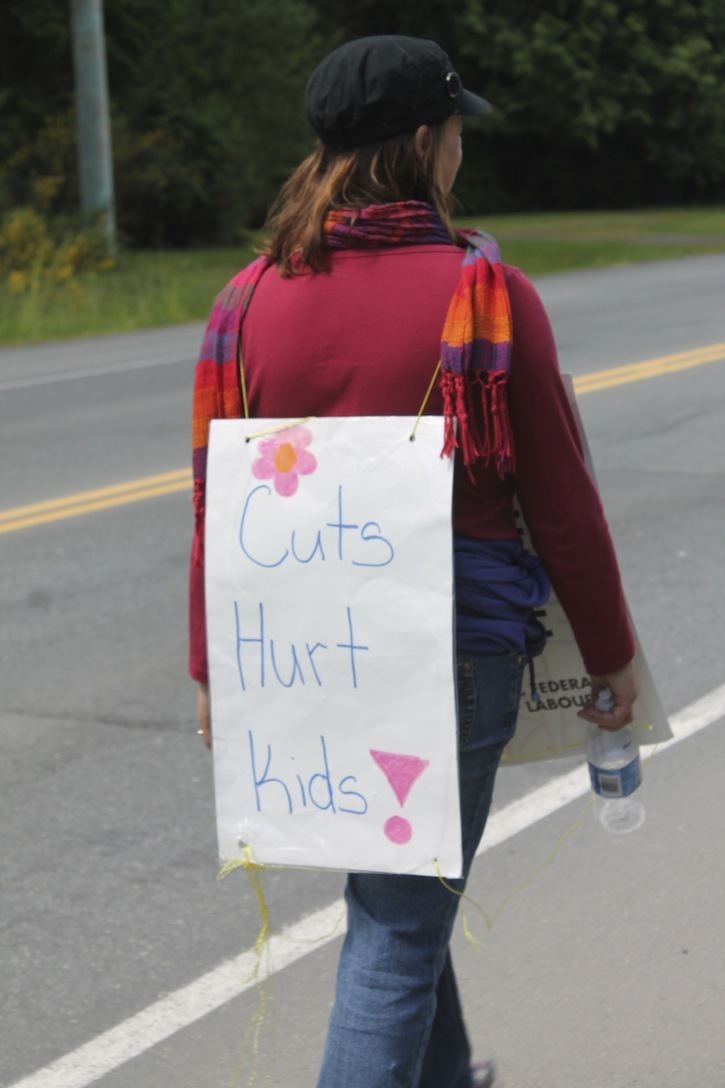Britt Santowski
Sooke News Mirror
This year, parents with children in the public school systems need to prepare for two completely opposing realities.
Option 1: Make lunches and send the kids back to school, fully equipped with their parent-funded shiny new backpacks, binders, papers and pencils. This option is an eventuality.
Option 2: Summer vacation gets prolonged for the kids as the educational strike continues, and parents engage in the anxiety-riddled juggling act of balancing their work with their child’s daycare. This second option is a possibility. On August 19, the Kootenay Lake School District (SD8) issued a statement that advised parents “that they should be prepared for the very real possibility that school will not start as planned.” The Sooke School District (SD62) has not yet released a statement.
The Sooke Family Resource Centre encourages parents to contact the Child Care Resource and Referral program (CCRR). In Sooke contact Erin 250-642-5152 Ext. 239.
In the event of a continued job action, starting September 2, SEAPARC will be offering School’s Out Day Camps in September. Contact SEAPARC for information and to register (250-642-8000). Space is limited. They will also offer some additional daytime Toonie Skates and afternoon Fun Swims. Information will be posted on their website (www.crd.bc.ca/seaparc).
Parents will have no way of knowing for what option to prepare. Further, parents will need to be able to act on either option with minimal time.
1. Make a list of resources. This can include relatives, stay-at-home parents, and friends who are known to your child(ren). You might be able to have grandma look after the kids on Monday, your neighbour on Tuesdays, and so on throughout the week.
2. Consider a volunteer care-swap program with a number of other parents. FIve responsible adults on a rotational basis can cover care for school-aged children for a week. Speak to your employer about working from home.
3. Dip into your savings. If you have to fork out money for child care and don’t have several thousand on hand, you may need to fund the extra expense. According to the government’s website, bcparentinfo.ca, the strike payments will be “processed within 30 days after the month in which the labour disruption ends.” This post-strike funding may enable you to replenish your savings, rebuild your RRSPs, or repay the loan that funded the daycare for your child(ren) a month after a deal is reached. Consider consulting a financial advisor when weighing the pros and cons of dipping into your savings, along with the tax implications.
4. Look for License-Not-Required (LNR) family child care. In a nutshell, people can provide unlicensed child care for up to two children in addition to their own. Numbers higher than that require licensing. According to childcarechoices.ca, “If a person or facility providing child care is not in compliance with these Child Care Regulations, they are operating illegally.”
5. Hire an in-home care provider, like a nanny or a regular babysitter, to look after your child(ren). If you consider this option, there are additional requirements parents have to consider. According to a government handbook entitled Parents’ Guide to Selecting Child Care, parents using this option are considered employers and must make payments to both Employment Insurance and Canada Pension Plan. Contact Revenue Canada and the Workers Compensation Board for other obligations.
6. Enrol your child in a registered child care program, home-based or otherwise. The Sooke Family Resource Society offers a Child Care Resource and Referral program. Information is available online at http://www.sfrs.ca/ccrr.html
7. Enrol your child in a private school. Langford has the Lighthouse Christian Academy, and Victoria has St. Michaels, St. Margaret’s, Glenlyon Norfolk and Pacific Christian to name a few. Private schools feature smaller class-sizes. Keep in mind that the government’s offering of $40 per day per child is intended for children in the public school system. Parents with children in a private school are ineligible for these funds.
8. Articulate your thoughts. Email Premier Clark (premier@gov.bc.ca), the Education Minister Fassbender (peter.fassbender.mla@leg.bc.ca), and the Opposition leader John Horgan (john.horgan.mla@leg.be.ca). Write your MLA, your local newspaper, and your local Parent Advisory Committee.
In an article on UBC’s Institute for Critical Education Studies (via blogs.ubc.ca), Katie Hyslop makes the point that there is a another factor at play. “Current negotiations … are further complicated by a B.C. Supreme Court decision in January that found the government’s response to an earlier ruling, preventing teachers from bargaining class size and composition levels until after current contract negotiations are settled, was also unconstitutional,” reads her blog entry. “The government appealed the January decision, which is expected to be heard in court in October.”
The government’s offering of $40/day/child will be available to the primary caregiver of eligible children under 13 attending a B.C. public school. According to a blog posting by Lindsay Tedds, an Associate Professor in the School of Public Administration at the University of Victoria the $40 a day payment will be considered a taxable source of income. Parents eligible for the one-time strike assistance funds can apply at website www.bcparentinfo.ca, some time in September.
